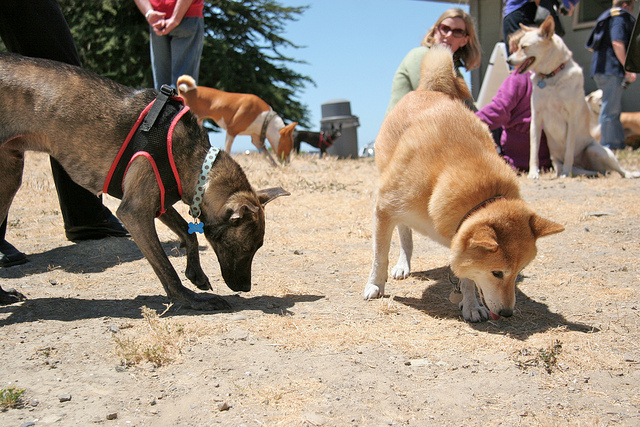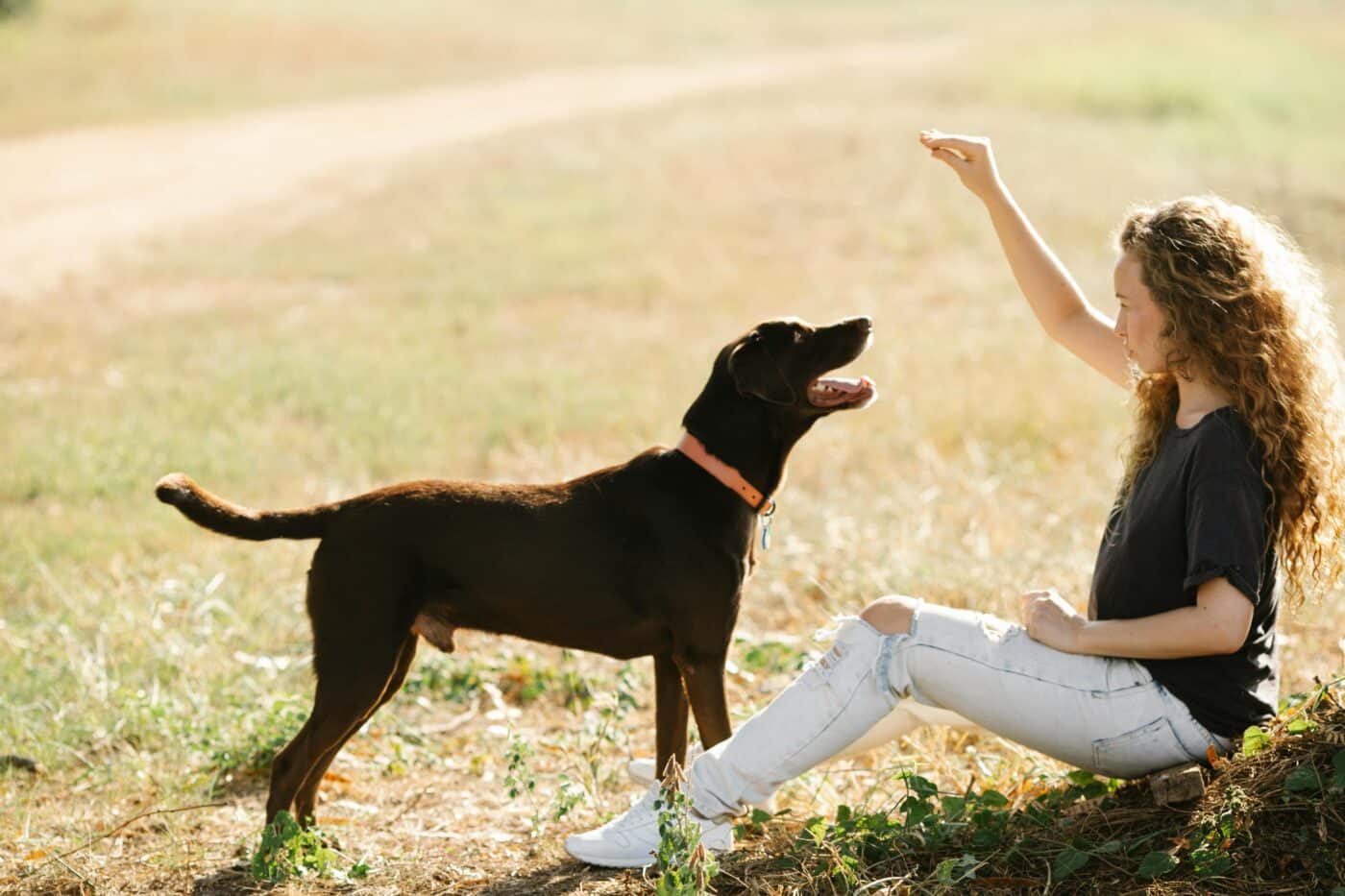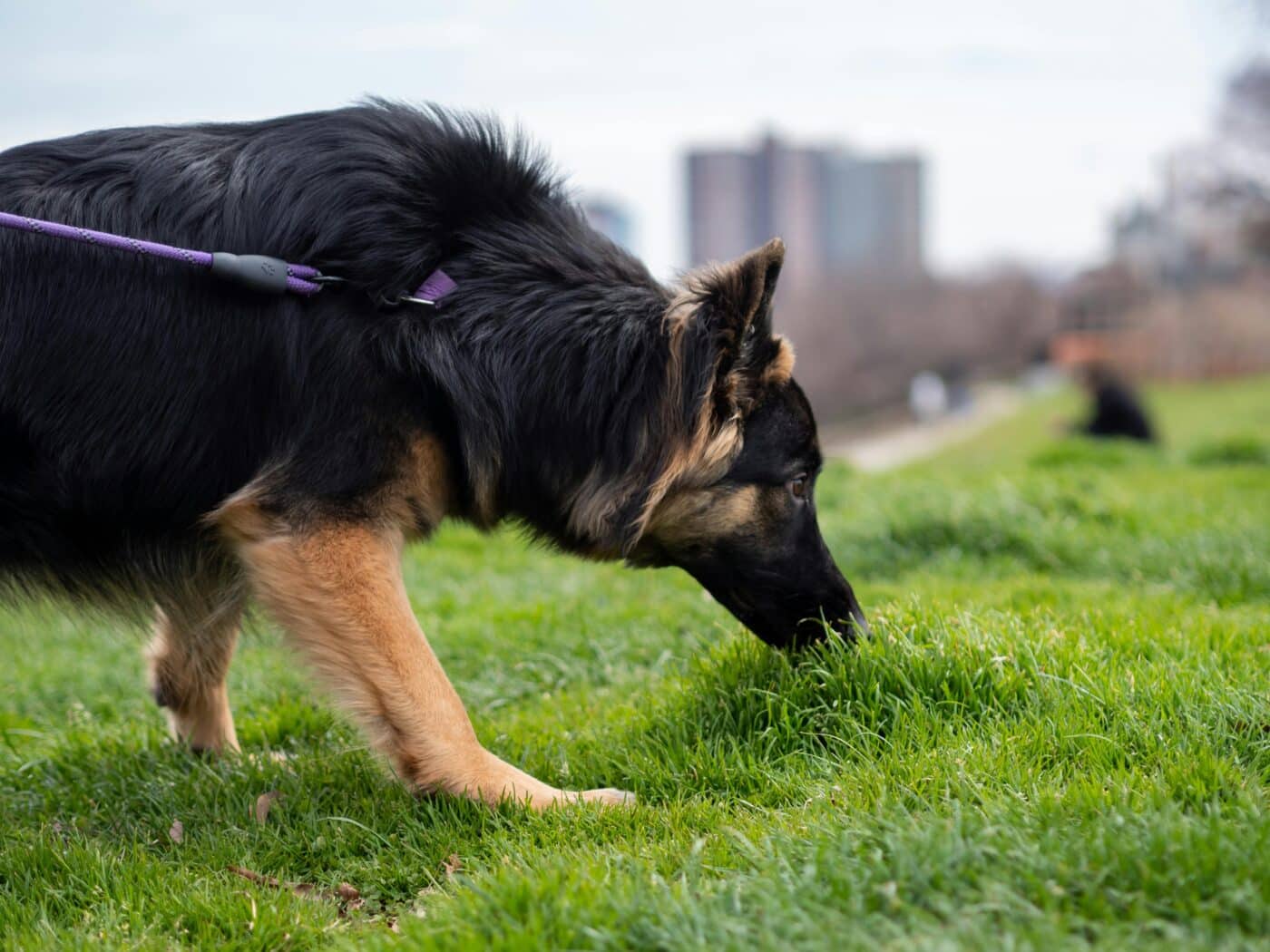

The belief that dogs can smell fear has been passed down for generations, and while it may seem like something from a movie, there is some truth to it. Dogs have a sense of smell far more advanced than humans, allowing them to detect subtle scents linked to changes in human emotions. This heightened ability allows dogs to pick up on the chemical changes when someone is scared. But can dogs truly smell fear, or is there more to the story?
The Extraordinary Power of a Dog’s Nose

To understand how dogs might be able to smell fear, we first need to grasp the incredible capabilities of their noses. Dogs possess up to 300 million olfactory receptors in their noses, compared to around 5 million in humans. This makes their sense of smell up to 100,000 times more sensitive than ours. The part of a dog’s brain dedicated to processing smells is much larger than humans, allowing them to analyze and interpret even the faintest of odors. Dogs can detect substances in parts per trillion, making them capable of picking up on a vast array of chemical changes in the environment—this includes changes that occur in humans when we experience fear.
How Fear Alters Human Body Chemistry

When humans experience fear or anxiety, our bodies undergo various physiological changes. One of the most significant changes is the release of stress hormones, particularly adrenaline and cortisol. These hormones are released into the bloodstream, causing a range of physical responses, such as an increased heart rate, faster breathing, and perspiration. Along with these changes comes the production of pheromones, chemicals released by the body through sweat glands. While humans are largely unaware of these subtle changes, dogs can detect them through their highly sensitive sense of smell. This means that dogs may be able to “smell” when a person is afraid simply by picking up on the scent of the pheromones and hormones we release in moments of fear.
The Role of Cortisol and Adrenaline

Cortisol and adrenaline are key players in the body’s “fight or flight” response, and these hormones are produced in greater quantities when we are scared or stressed. With their incredible noses, dogs can detect these chemical changes almost immediately. Research has shown that dogs can be trained to detect changes in human cortisol levels, often associated with fear or anxiety. The sharp rise in cortisol and adrenaline levels during a fearful event may lead to changes in body odor that are imperceptible to humans but easily detected by dogs. This suggests that dogs aren’t necessarily “smelling fear” directly but sensing the hormonal and chemical changes accompanying fear.
Dogs and Their Ability to Sense Emotion

Dogs can pick up on human emotions through scent and observing body language, facial expressions, and vocal cues. This emotional sensitivity, combined with their powerful noses, makes dogs incredibly attuned to their human companions. While a dog’s sense of smell plays a significant role, their ability to detect fear may also be influenced by the behavioral and physiological signals that humans exhibit when scared. For example, a person’s posture may change, their voice may tremble, or they may exhibit nervous behaviors, all of which can alert a dog to something wrong.
The Evolutionary Bond Between Humans and Dogs

The ability of dogs to detect human emotions, including fear, can be traced back to their long evolutionary relationship with humans. Dogs have been by our side for thousands of years, evolving alongside us as working animals, protectors, and companions. This close bond has likely enhanced their ability to read and respond to human emotions. In the wild, dogs’ ancestors—wolves—relied on their pack members for survival, and sensing fear or stress in other pack members could be crucial in dangerous situations. Today’s domesticated dogs have inherited this keen awareness of emotional states, and their ability to detect fear may be an extension of this deep evolutionary bond.
Can Dogs Sense Fear and React Aggressively?

One of the most common myths surrounding dogs and fear is that dogs are more likely to attack or react aggressively if they sense fear in a person. While dogs can detect fear through scent and behavior, it’s important to note that most dogs don’t respond to fear with aggression. In fact, many dogs react with empathy, seeking to comfort or protect the person they sense is afraid. However, if a dog is poorly socialized or has a history of fear aggression, they might become more reactive when they pick up on someone’s fear. It’s not the fear that triggers aggression but rather the dog’s interpretation of the situation based on their own experiences and socialization.
Scientific Studies on Dogs and Fear Detection

Several scientific studies have explored the idea that dogs can detect fear in humans. In one experiment conducted at Queen’s University Belfast, researchers collected sweat samples from people before and after watching scary movies. The samples were then presented to dogs to see how they would react. The dogs responded differently to the sweat produced during fear-inducing situations, suggesting they could detect the change in emotional state through scent. Other studies have shown that dogs can detect changes in human breath and sweat associated with anxiety or stress, reinforcing that dogs are highly sensitive to our emotional states, including fear.
Dogs Helping with Anxiety and Stress

Because dogs are so in tune with human emotions, they are often used as therapy animals to help people cope with anxiety, stress, and fear-related disorders. Service dogs, for example, can be trained to detect changes in a person’s cortisol levels and provide comfort or support during panic or stress. This ability to sense changes in human emotions has made dogs invaluable companions for people suffering from anxiety disorders, post-traumatic stress disorder (PTSD), and other mental health conditions. In this way, dogs’ ability to “smell fear” can be used to provide emotional support and relief.
The Role of Training and Socialization

While a dog’s sense of smell is undoubtedly powerful, training and socialization heavily influence their ability to detect and appropriately respond to human fear. Dogs that have been well-socialized and trained to read human emotions are more likely to respond calmly and supportively when they sense fear. On the other hand, dogs with negative experiences with fearful humans or lack proper socialization may react unpredictably. This underscores the importance of proper training and exposure to various human emotional states, helping dogs learn to respond in helpful rather than reactive ways.
Fear Detection: More Than Just Smell

While the myth of dogs “smelling fear” is rooted in truth, it’s important to understand that their ability to detect fear goes beyond their sense of smell. Dogs are keen observers of human behavior and use visual, auditory, and olfactory cues to assess our emotional states. From trembling voices to posture changes, dogs take in multiple signals to form a complete picture of how we’re feeling. This multi-sensory approach allows dogs to accurately detect fear, making them uniquely attuned to our emotions.
The Wagging (and Sniffing) Truth About Fear

So, can dogs really smell fear? The answer is both yes and no. While dogs don’t “smell fear” in the way we might imagine, they can detect the physiological and chemical changes that occur when a person is afraid. Through their incredible sense of smell, dogs pick up on the hormones and pheromones we release when stressed or scared, and they combine this with cues from our behavior and body language. This allows them to accurately gauge our emotional state, including fear. Dogs’ ability to detect fear isn’t magic—it’s a testament to their powerful noses and deep connection with humans.
The Nose Knows (and a Little More)

While dogs may not “smell” fear as we imagine, their remarkable sense of smell enables them to detect subtle changes when we’re scared. From pheromones to cortisol levels, dogs pick up on the chemical and behavioral cues that signal fear. Coupled with their natural ability to read human emotions, dogs appear to have a sixth sense for understanding our feelings. So, the next time you’re anxious, remember—your dog is likely aware and ready to offer comfort or protection with a nuzzle or a bark.
The post Can Dogs Really Smell Fear? The Science Behind the Myth appeared first on iHeartDogs.com.
